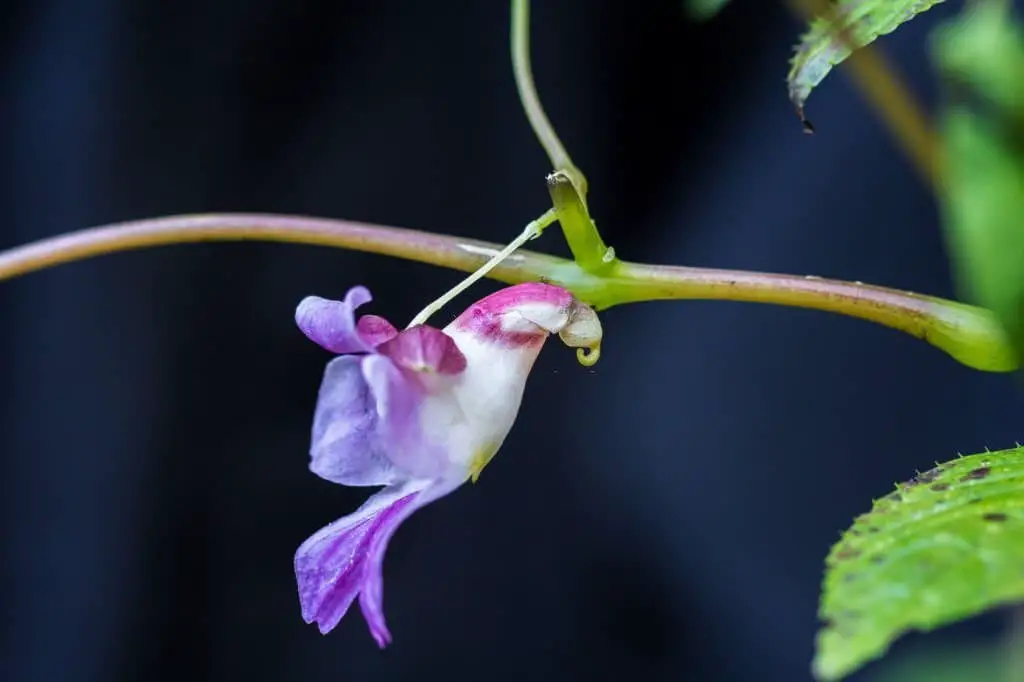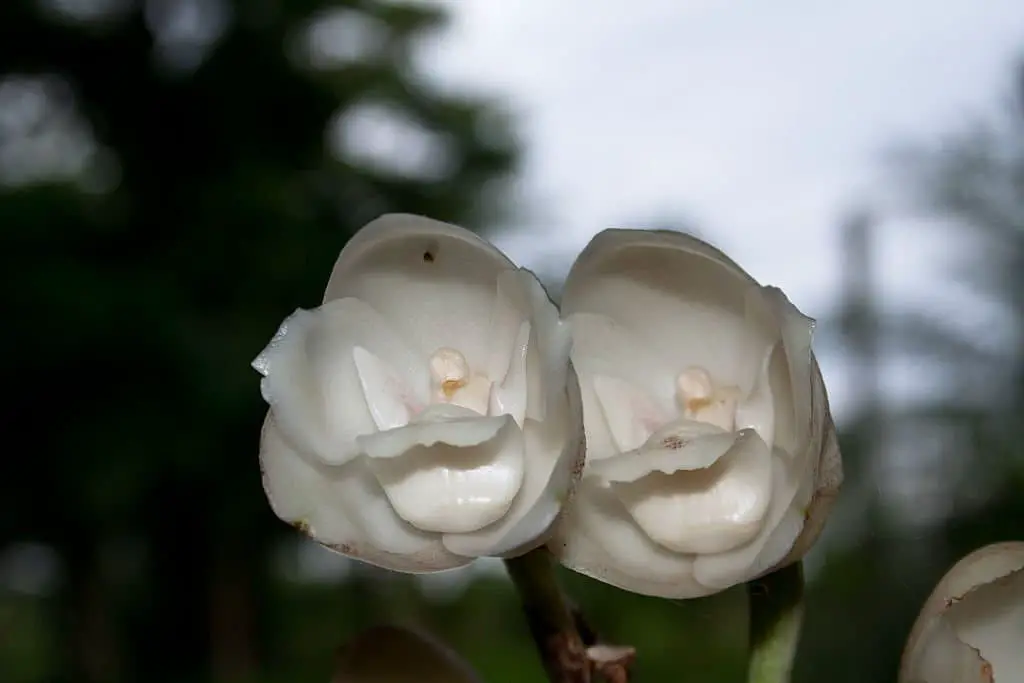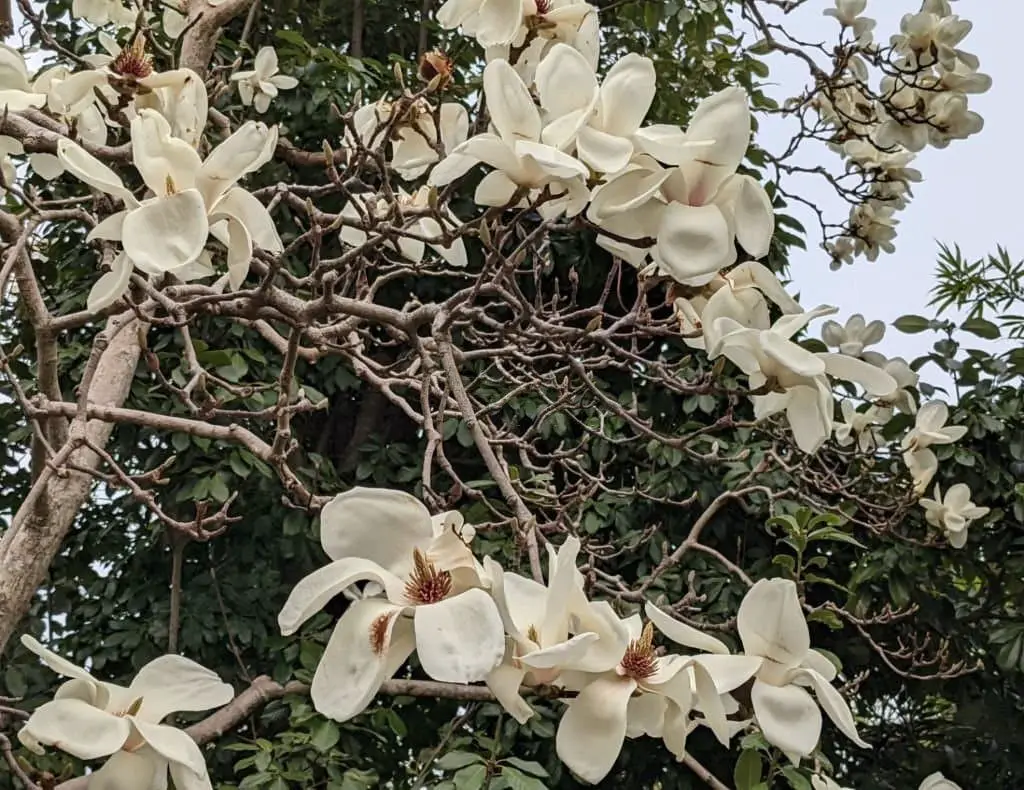14 Beautiful Flowers That Look Like Birds (With Pictures)
Looking for a unique and bird-friendly addition to your garden? You’re in luck! Certain flowers not only add vibrancy and life to your outdoor space, but also attract birds. In this article, we’ll explore the fascinating world of flowers that resemble our feathered friends. We’ll delve into 14 species that will captivate you with their striking similarities to birds, as well as provide practical tips on how to cultivate them in your own garden.
From the elegant Angel Orchid to the majestic Yulan Magnolias, we’ve got you covered. Whether you’re a seasoned gardener or just starting out, these bird-like blooms are sure to delight and attract some fine feathered company.
Beautiful Flowers That Look Like Birds
Angel Orchid.

The Bird Orchid’s distinctive appearance is evident from its very name – and for good reason! The flower’s bloom features an elongated spur that arcs upwards, culminating in a ruffled lip. Its petals are a pristine white, punctuated by deep purple spots. The overall shape of the flower bears a striking resemblance to a bird in mid-flight. Interestingly, this orchid is endemic to Central America, where it faces the threat of extinction due to habitat destruction.
Bat Flower (Tacca chantrieri).

Native to tropical Asia, this striking flower is commonly found in India, China, Thailand, and Vietnam. Its large, unconventional blooms boast a remarkable color palette, graduating from pure white to creamy hues and subtle greenish-yellow shades.
The flower’s most distinctive feature lies at its center, where a peculiar face-like formation emerges, flanked by two long ‘ears’ or ‘wings’ that stretch outwards.
These impressive blooms can reach lengths of up to 12 inches and are often incorporated into floral arrangements for their unique charm.
Bird Head Orchid (Phalaenopsis spp.).

Perched delicately atop a slender stem, the Bird Head Orchid resembles a tiny bird taking flight. Its blooms are as dainty as they are stunning, making them a sought-after addition to bouquets and floral arrangements. This exotic species is native to Southeast Asia, with Malaysia, Indonesia, and the Philippines serving as its natural habitat. To thrive, these tropical flowers require warm temperatures and high humidity – conditions that can be challenging to replicate in cooler climates.
As such, they are often cultivated in greenhouses or conservatories where their unique needs can be met.
Bird of Paradise (Strelitzia reginae).

In the heart of South Africa lies the majestic bird of paradise, also known as the crane flower or strelitzia. This flowering plant is the sole representative of its genus, Strelitzia, within the family Strelitziaceae. A perennial evergreen, the bird of paradise grows to a height ranging from one to three meters, boasting large, leathery leaves that form a striking rosette at its base. The leaves’ dark green hue is accentuated by a distinctive white stripe running along their center.
In contrast, the flowers of this stunning plant burst forth in vibrant shades of blue, orange, or yellow, held aloft on slender stalks that attract birds and insects as pollinators.
Bird’s Mouth Orchid (Orthoceras strictum).

In the western United States, a unique orchid species blooms from May to July. Its white flowers feature striking purple veins and a bright yellow throat, with petals curved downward, reminiscent of a bird’s beak. This distinctive appearance is where the Bird’s Mouth Orchid gets its common name. The specific epithet, strictum, translates to ‘upright’ or ‘straight,’ referencing the arrangement of flowers on the stem.
As part of the Orthoceras genus, comprising around 60 species of orchids, these plants thrive in temperate regions across North America, Europe, and Asia. The Bird’s Mouth Orchid relies on bees for pollination, which are drawn to the flowers’ color and shape. As the bees collect nectar, they inadvertently transfer pollen to other flowers, facilitating reproduction.
Crane-fly Orchid (Tipularia discolor).

The crane-fly orchid, also known as the North American wildflower, is distinguished by its distinctive flower shape, which bears a striking resemblance to a crane fly. The vibrant blooms of this orchid species can be seen in a range of hues, from soft pink to rich purple, and typically begin to appear late in the summer season, persisting through the fall.
While these captivating flowers are capable of attracting a variety of insects, they are ultimately pollinated by bees and other small insects that are drawn to their sweet nectar.
Flying Duck Orchid (Caleana major).

The Flying Duck Orchid’s unique appearance, resembling a flying duck with its brown and white petals, is only one aspect of this fascinating species. Native to eastern Australia, these orchids bloom from September to November, offering a brief but striking display. What sets the Flying Duck Orchid apart is its innovative method of pollination.
The flowers emit a sweet fragrance that attracts male sawflies, which, when they enter the flower, inadvertently collect pollen from the stamen as they move around. Once pollinated, the flower closes up, effectively trapping the sawfly until it’s ready to fly away and repeat the process with another Flying Duck Orchid.
Green Birdflower (Crotalaria cunninghamii).

In the Australian landscape, the Green Bird flower stands out with its striking petal arrangement that bears an uncanny resemblance to a bird’s head. This remarkable bloom boasts a rich, deep green hue and flaunts a prolonged flowering season, making it a standout in any garden setting. If you’re on the hunt for a one-of-a-kind floral addition to elevate your outdoor space, the Green Bird flower is certainly a worthy contender.
Moth Orchid (Phalaenopsis orchid).

The Moth Orchid, aptly named for its remarkable resemblance to a moth in flight, boasts delicate white blooms that occasionally give way to pink or purple hues. Its origins can be traced back to Southeast Asia, where it thrives in countries such as Thailand, Malaysia, and Indonesia.
Parrot Flower (Impatiens psittacina).

In the lush tropics of Africa and Asia, a stunning flower catches the eye – the Parrot Flower. Its vibrant petals and elongated beak evoke the image of a colorful parrot perched on a branch. Native to Malaysia, Indonesia, and Thailand, this exotic bloom has garnered popularity in gardens and landscaping for its one-of-a-kind appearance and adaptability to tropical climates.
The Dove Orchid (Peristeria elata).

Deep within the lush rainforests of Central and South America lies a unique floral gem – the Dove Orchid. Its striking appearance, reminiscent of a dove in flight, is not the only fascinating aspect of this species. The flower’s fragrance plays a crucial role in its pollination process, attracting male euglossine bees that are essential for its reproduction.
As these specialized bees land on the orchid’s surface, they inadvertently brush against the anthers, collecting valuable pollen grains.
This pollen is then transferred to other flowers of the same species, effectively pollinating them in a remarkable example of symbiotic relationships.
Western Bearded Greenhood Orchid (Pterostylis barbata).

In the southwest of Western Australia, nestled in open heathland, woodlands, and shrublands stretching from Geraldton to Albany, lies the Western Bearded Greenhood Orchid. This small, terrestrial orchid is endemic to its region, with a unique appearance that sets it apart from other species.
Its common name stems from the striking features of its flowers: a green ‘hood’ accompanied by a brown or black ‘beard’.
The blooms are clustered on a solitary spike that emerges from a tuberous rootstock, adding to their distinctive charm.
The Western Bearded Greenhood Orchid’s flowering period typically spans July to October, making it a prized sighting for orchid enthusiasts during this time.
White Egret Flower (Habenaria radiate).

The White Egret Flower stands out for its distinctive, bird-like appearance. The elongated petals create a striking resemblance to a bird in flight, while the blooms typically appear in shades of white, pink, and purple. Optimal growing conditions include moist soil and full sun exposure. Native to Asia, this flower has been introduced to other regions worldwide.
It’s essential to distinguish the White Egret Flower from its namesake, the Bird of Paradise (Strelitzia reginae), a distinct species with origins in South Africa. The Bird of Paradise earns its name from its vibrant blooms resembling a bird’s head. As a member of the orchid family, the White Egret Flower shares similarities with other flowers like the Lady’s Slipper Orchid (Cypripedium calceolus).
Yulan Magnolias (Magnolia denudata).

In China’s native flora, the Yulan Magnolia stands out with its striking features. Dubbed as the tulip tree due to its large, white blooms resembling birds in flight. This rare species has gained popularity among garden enthusiasts, who appreciate its one-of-a-kind charm and unique appeal.
FAQs
What are the flowers called that looks like feathers?
Native to South Africa, the bird of paradise flower is renowned for its striking resemblance to the majestic birds it’s named after. Its vibrant petals are a sight to behold, making it an excellent choice for anyone looking to inject some vibrancy into their garden. Whether you’re a seasoned horticulturist or simply someone who appreciates the beauty of nature, these flowers are sure to captivate and delight.
Why does yulan magnolia look like birds?
In eastern Asia, the yulan magnolia (Magnoliaceae family) has long been cherished as a symbol of good luck and happiness, particularly in China where it’s also known as the ‘tree of happiness’. Native to China and Japan, this flowering plant is widely cultivated across other parts of Asia. Its striking flowers, often likened to birds in flight, are a breathtaking sight when they bloom in late winter or early spring, boasting delicate white hues with subtle pink undertones.
Following the flower show, large dark green leaves unfurl. The yulan magnolia’s ornamental appeal has led to its global introduction, making it a popular choice for public parks and gardens, as well as private landscapes. With its adaptability to diverse growing conditions, this tree is remarkably easy to care for.
Conclusion
With this selection of bird-like flowers, we’ve showcased just a few examples of how nature can inspire and delight. From petals that mimic feathers to colors reminiscent of sky and earth, each of these blooms brings its own unique charm to the garden. Whether you’re a seasoned gardener or simply looking for inspiration, there’s something special about incorporating these bird-inspired flowers into your outdoor space.
Do share with us in the comments below if you have a favorite flower that captures the essence of our fine-feathered friends!
Related Posts
When it comes to flower delivery, gratuities can be a crucial aspect of the service. As you await the arrival of your beautiful blooms, you may wonder whether or not to tip your floral courier. Understanding the norms and expectations surrounding tips for flower delivery can help you make an informed decision. This is particularly important when considering the quality of service provided by your florist.
On the other hand, a colorful perennial garden in partial shade can be a stunning addition to any outdoor space. With the right selection of plants, you can create a lush and vibrant atmosphere that will brighten up even the most shaded areas. But before we dive into these topics, let’s take a look at some weeds with yellow flowers that you might want to identify and remove from your garden.
And finally, for those interested in growing African violet plants or Astilbe perennials, we’ve got some valuable tips and profiles to share. Last but not least, we’ll be highlighting our top ten shade perennials suitable for a cold climate, which can help you create a thriving and beautiful garden even in the most challenging weather conditions.






